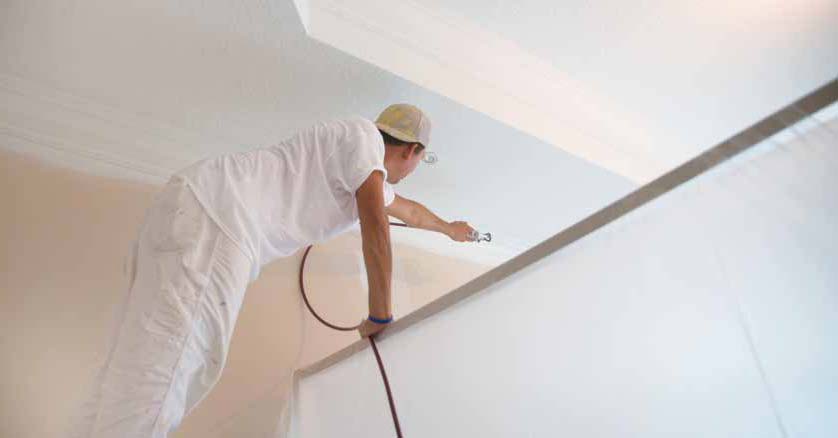Understanding spray gun transfer efficiency can improve your bottom line
 In the world of spray gun technology and performance, transfer efficiency is simply defined as the amount of paint that actually lands on the substrate versus the paint lost to overspray and the atmosphere. Other than on the day a painting contractor purchases a sprayer, the term probably rarely comes to mind for a business owner.
In the world of spray gun technology and performance, transfer efficiency is simply defined as the amount of paint that actually lands on the substrate versus the paint lost to overspray and the atmosphere. Other than on the day a painting contractor purchases a sprayer, the term probably rarely comes to mind for a business owner.
But paying attention to what it takes to improve transfer efficiency could boost a company’s bottom line. Crews who use less paint while still maintaining high-quality standards are a great asset. Spraying technique is obviously a big factor in improving transfer efficiency; understanding equipment and materials also helps.
“Painting companies know which crews are using less paint. And when one crew uses 10% less, the main variable is the person pulling that trigger,” said Chuck Flower, product manager with Titan.
TECHNIQUE, LOW PRESSURE
For standard airless sprayer systems commonly used for home or commercial exteriors, transfer efficiency ratings often range 40–60%, says Mike Collins, channel marketing manager for Titan. But figures quoted by manufacturers are for IDEAL conditions, he adds.
“A contractor can dramatically improve or decrease those numbers based on how far the gun is from the wall when spraying. If you pull your hand back or move it forward several inches, your results will be very different,” Collins noted.
To improve transfer efficiency, it’s a careful balance between pressure adjustments, distance from the substrate, and understanding the density of a coating. Lighter, cheaper paints tend to lose more to the atmosphere, but adjusting spray gun pressure is proving to be one of the greatest game changers when it comes to achieving better transfer efficiency.
When requested, Titan periodically conducts trainings for customers. Trainers like to help crew members understand that using the lowest pressure possible improves pump life, tip usage and transfer efficiency, Flower explained.
“When spraying with airless equipment, we ask they turn the pressure down until they achieve tailing, then slowly turn the pressure up until the tailing disappears,” Flower explained. “I am not sure that many people follow this procedure; however, this could help with transfer efficiency and equipment longevity.”
Using a low-pressure tip can also improve transfer efficiency, Collins said. With good technique and Titan’s low-pressure airless tips, both Flower and Collins say they’re seeing overspray, in general, being cut in half.
“I’ve been in this field for about 20 years, and the low-pressure airless tips are by far the largest positive change to transfer efficiency I’ve seen in that time,” Flower added.
Titan’s TR1 High Efficiency Airless (HEA) Spray Tip effectively dials down pressure and sprays coatings at 1000 PSI with 55% less overspray, Collins noted, all at the same flow and production levels as standard airless tips.
Dialing back the pressure adjustments and using low pressure tips is a philosophic shift for many in high-production situations, according to Collins.
“The general consensus is that the higher the pressure the faster you will go. Generally, that’s not a true statement,” he said.
For more on professional equipment trends, visit inpaintmag.com




